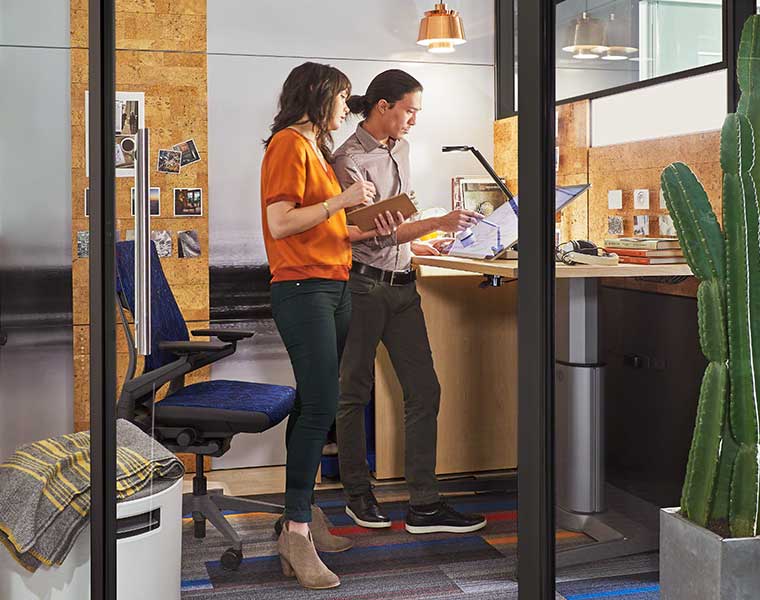Last month, we shared our thoughts on how businesses and designers can start facilitating the new styles of teamwork emerging today. We discussed how problem-solving is becoming less linear and as a result, teams and their working environments have become more fluid and adaptable.
Another part of the evolutionary process we’re seeing, which we didn’t really touch on in our last article, is the ongoing demise of the professional hierarchy. As teams become more mixed-bag, multi-status and less concerned with organisational structures, company cultures are becoming far less formal, paving the way for new attitudes and behaviours.

The age of hyper-collaboration
This renavigation – favouring skill and contribution over hierarchical position or length of service – is no doubt part of the ripple effect which has led to our current age of ‘hyper-collaboration’. People are working more collaboratively and tending towards teamwork more regularly than ever before, which has also somewhat dissolved departmental segregation.
For example – no longer does the IT department work together as one faction, independently from say, the marketing department and the research team. People from cross departments are coming together to create more diverse teams with stronger, more varied knowledge.

A new lens to look at leadership
With this fluidity and activity-based adaptation of teams and styles of work comes a demand for new ways of thinking about leadership. The confines of the traditional hierarchy system can no longer serve as many projects or strategies and people today are looking for something else – a more level playing field where idea-sharing is unbiased and contribution is balanced.
Experts from the University of Amsterdam and Drexel University carried out two complimentary studies to explore the impact of imposed hierarchy on teamwork in the modern age. The first study set two separate groups the same task: to pitch in front of a potential customer against a rival.
While both groups were given the same task, the structure of each team was different. One team had a clear hierarchy and the other team was an egalitarian group not organised by professional status. The results demonstrated that collaboration and efficiency were better in the latter group with no hierarchical restrictions.

Dr Lisanne Van Bunderen, Assistant Professor of Organisational Behaviour at the University of Amsterdam summarised these findings by saying that:
“The egalitarian teams were more focused on the group because they felt like ‘we’re in the same boat, we have a common fate’. They were able to work together, while the hierarchical team members felt a need to fend for themselves, likely at the expense of others.”
Steelcase refer to these newly evolved teams as ‘modern tribes’ which are tighter knit than before and have a distinct family vibe about them. Co-creation, brainstorming sessions and workshops have become commonplace in processes today and this hyper-collaborative approach is forcing a re-imagining of the hierarchy.
Catering for multi-disciplinary ‘modern tribes’
So, how do we design and cater for these new multi-disciplinary teams? If the workforce of today is going to perform better when they feel like ‘they’re all in the same boat’ – how can you create a physical environment which helps foster this kind of culture?

Our experts have got some pearls of wisdom to impart:
- Incorporate plenty of touchdown and transition spaces to support agile working
- Take measures to maintain communication in a flexible working environment
- Considering transforming your workspace into a well-connected smart office
- Make sure you cater for both digital and analogue creativity
- Provide social spaces which can help boost productivity and collaboration



